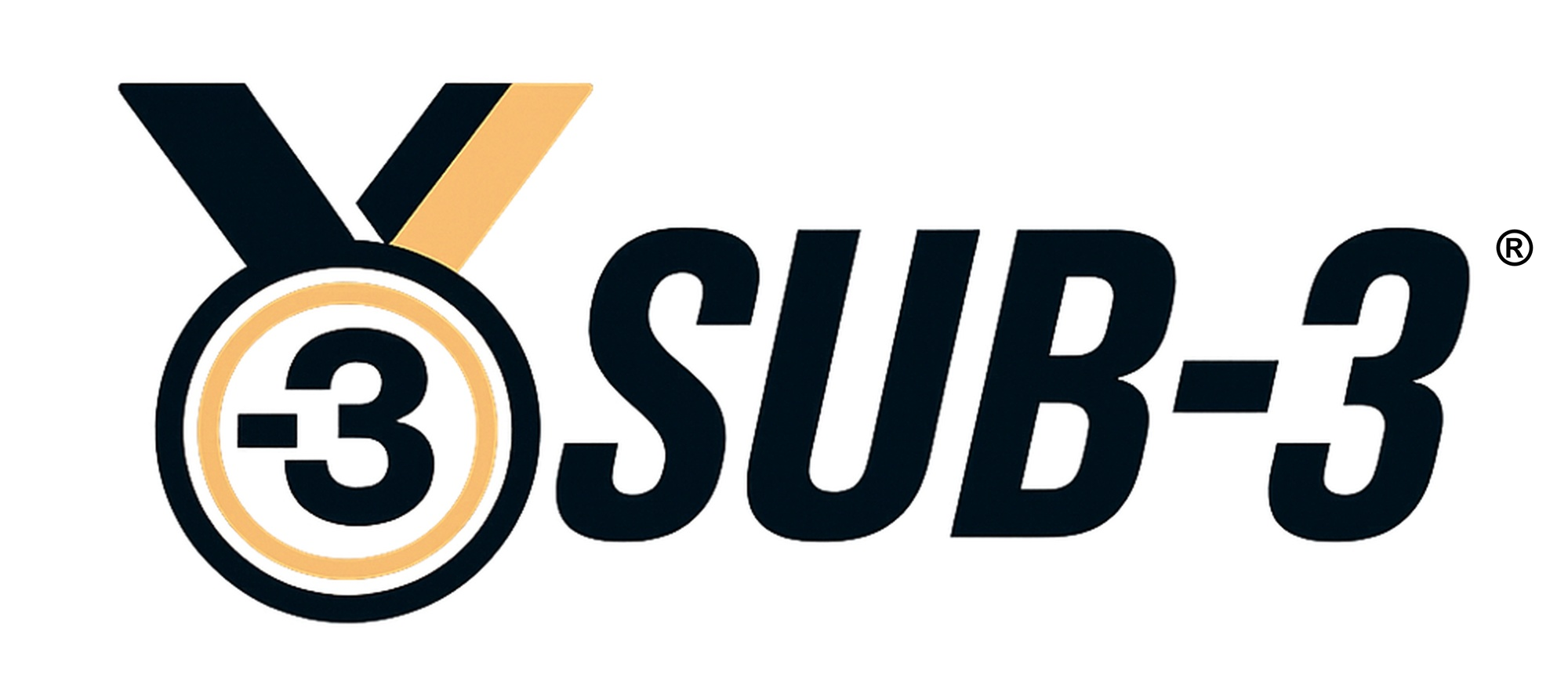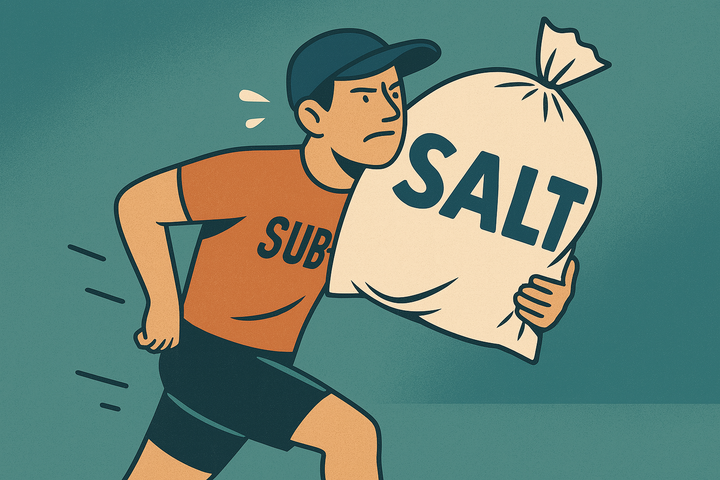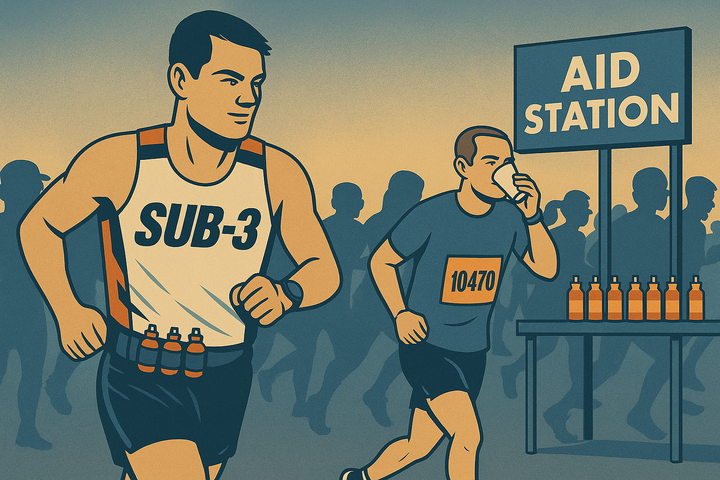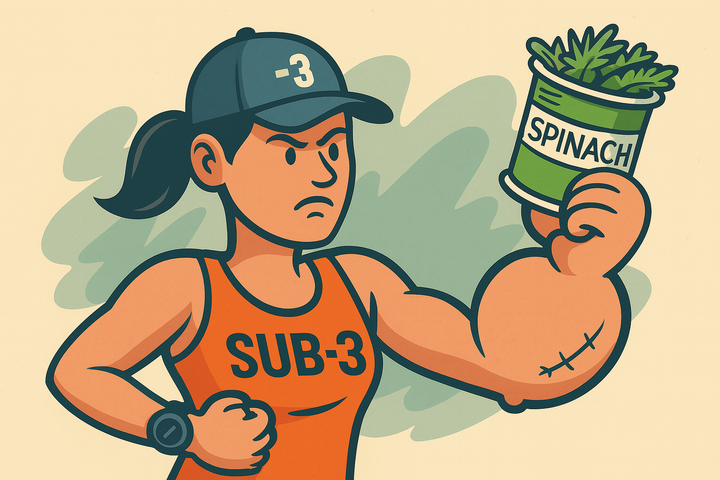Can NMN help you go sub-3? A personal take on the NAD+ craze
Vivid dreams, deeper sleep, and the strange supplement that might just help with recovery — a personal look at NMN from a sub-3 marathoner.
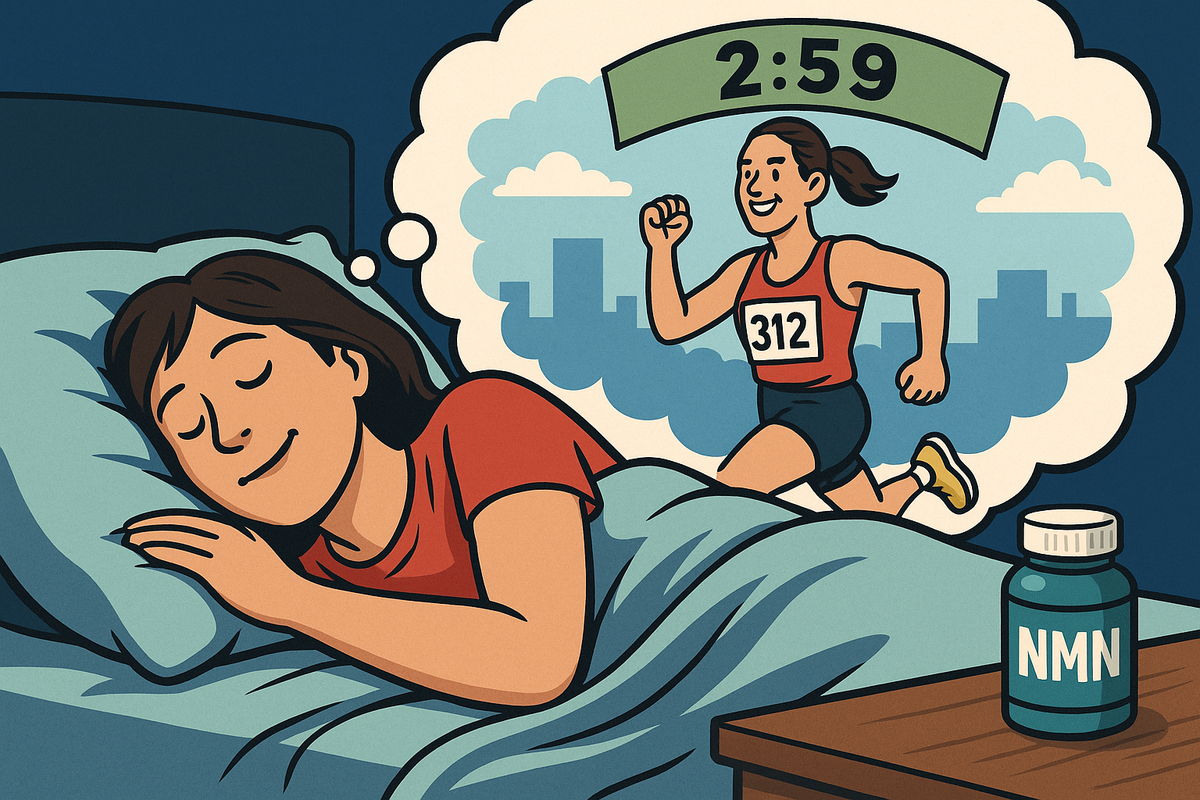
You may already have heard about NMN or NAD+, if only through the flood of social media ads promising enhanced energy, recovery and longevity. (If you haven’t seen any yet, then I fear just reading this article may have alerted the algorithm. That’s on me - sorry.)
But I didn’t get onto NMN via Instagram influencers. It was through the superb chapter “US Military and Pentagon Testing a Pill to Improve Performance” in Andrew Snow’s Run Elite. That chapter references seven so-called “master genes” — sirtuins — which control genetic expression and play a key role in DNA repair. Nicotinamide Adenine Dinucleotide (NAD+) us what "fuels" these genes.
“When you're young, you have an abundance of NAD+. But when you turn 50, NAD+ drops by more than 50%. This decrease in NAD+ that occurs with age is detrimental to your ability to produce energy, to recover and to build new muscle/ligament/tendon tissue, and to countless bodily functions that aid your running and every aspect of your life (including memory, cognition and fat metabolism).”
— Andrew Snow, Run Elite
NAD+ declines rapidly after 30, and it’s notoriously hard to supplement directly. The body absorbs it more reliably via “precursors” — namely nicotinamide riboside (NR) or nicotinamide mononucleotide (NMN). In the UK, NMN is still easy to purchase legally, though the regulatory picture is shifting in the US and elsewhere. As with any supplement, quality control matters — so choose a reputable manufacturer.
After reading Snow’s work, and at 45 years old, I did my research and started taking NMN daily — 500mg in the morning, alongside creatine and beetroot juice before my fasted runs. After research, I selected Vivanmn, which seemed to provide the most transparent data/research around efficacy and content of capsules. That was over six months ago.
And here’s the surprising part: I noticed a difference.
Most supplements — even good ones — work in the background. You assume they’re helping, but it’s hard to feel it. With NMN, I experienced something much more tangible: vivid, cinema-grade dreams and far deeper sleep. Apparently, this is a common effect. Standard guidance is to take it early in the day to avoid sleep disruption.
That better sleep has coincided with the most intense block of training I’ve ever completed. During my 2025 London Marathon prep, I logged seven consecutive weeks of 160–200km training — including five ultramarathon training runs, plus speedwork, hills and 5–6 races where I set PBs across multiple distances. I even ran a full marathon the morning after a 5K PB of 16:11. No injuries. No breakdown.
Of course, it wasn’t just NMN. I’ve spent years building up to this kind of workload with a professional coach. I’m eating over 160g of protein daily. I’m taking beetroot juice, magnesium, creatine and beta-alanine. But something’s clicked — and I genuinely feel like I’m recovering faster, tolerating intensity better and absorbing mileage more efficiently.
That said, not everyone reacts the same way. A clubmate of mine found NMN increased his resting heart rate. Mine is slightly elevated too (by 3–4 bpm), but I’ve never viewed RHR as a performance metric in itself. Often my RHR is higher after big training efforts — and if NMN is supporting recovery, maybe that’s part of the process.
What does the science say?
Here’s the short version: NMN shows promise, but research is still early-stage.
- Most of the data comes from animal studies. There are some small human trials suggesting potential benefits in metabolic function, insulin sensitivity and fatigue resistance, but evidence for endurance performance remains limited.
- The International Olympic Committee (IOC) does not include NMN on its list of supplements with consistent, proven ergogenic effects. Those remain caffeine, creatine, beta-alanine, sodium bicarbonate and nitrate.
- NMN appears to have a low risk of short-term side effects, but it’s not yet well studied over the long term. Anyone using it should understand that it’s still in the “early adopter” phase of the evidence curve.
Final word
I’m not claiming NMN is essential - or even necessary - for going sub-3. But I am still taking it (I'm sticking with Vivanmn), and it’s one of the few supplements where I’ve noticed a genuine, physical difference. My sleep is better, my training feels more resilient and I bounce back quicker than I used to.
That may not sound dramatic. But when you’re operating at the limits of what your body can handle, even modest improvements can make a real difference.
At worst, I’ve paid for vivid dreams. At best, I’ve nudged my recovery and performance in the right direction. And if you’re curious - and cautious - this might be one experiment worth considering.
Note: The author has been using Vivanmn - at his own expense, not via sponsorship - for over 6 months prior to writing this piece. The quality / impact of other NMN brands cannot be commented upon.
Enjoyed this article? Help keep Sub-3 running — support us with a coffee.
To help fund the running of the site, Sub-3 is an Amazon Associate and earns from qualifying purchases. We only recommend gear or kit that has genuinely helped in our own running and that we believe is worth considering.
